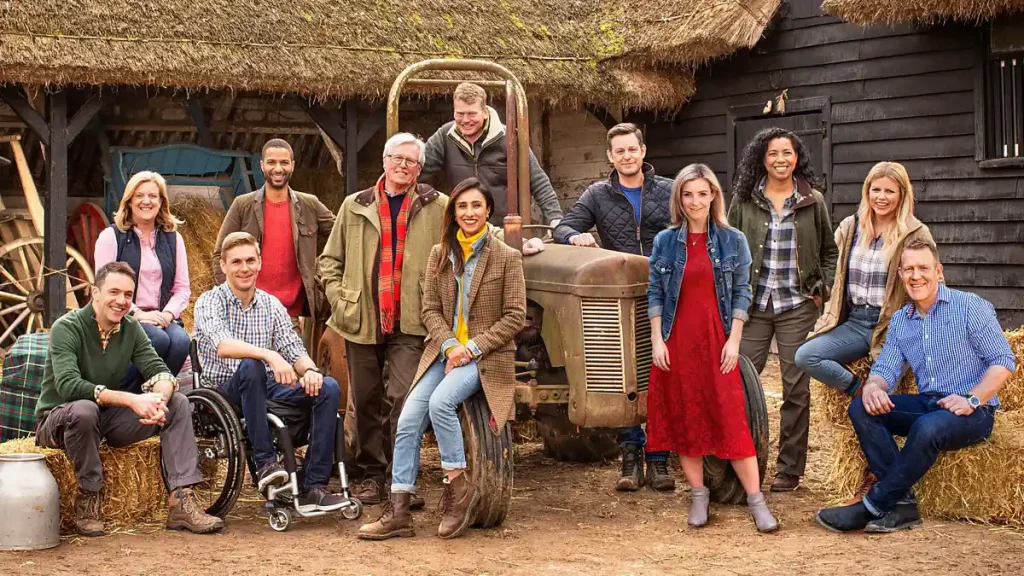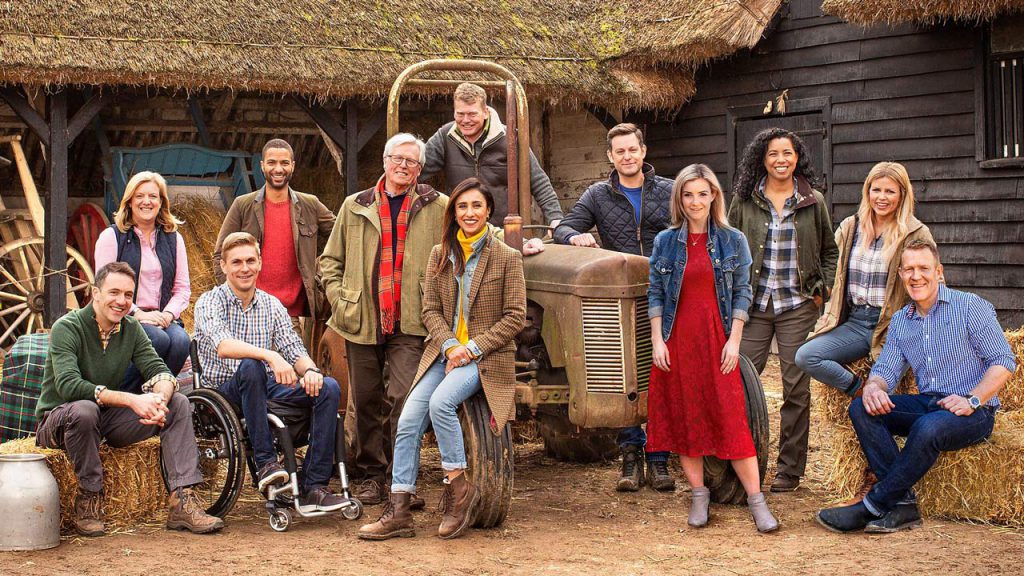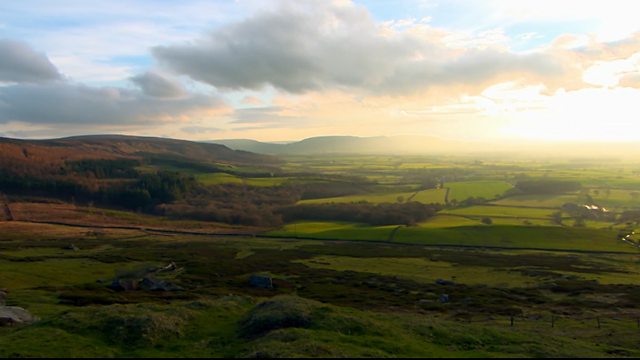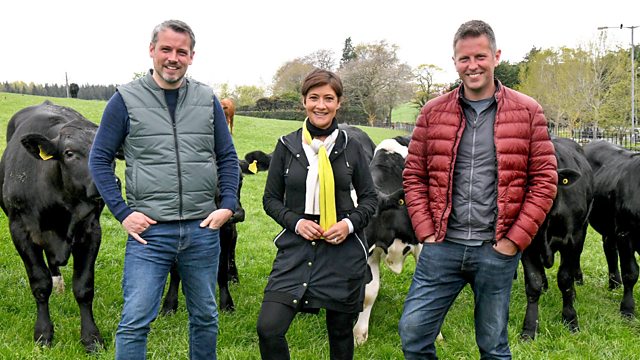Countryfile – Wild Fires – In the aftermath of one of the most devastating fires ever to sweep through the picturesque UK countryside, two intrepid explorers, Joe Crowley and John Craven, embark on a journey that delves deep into the impact of the increasing wildfires.
Venturing into the rugged and awe-inspiring Scottish Highlands, Joe Crowley meticulously scours the charred landscape around Cannich, his keen eyes searching for any flicker of life amidst the ashes. Here, he encounters the brave souls who have tirelessly battled a relentless wildfire that has raged since the early days of May. Undeterred by the grim aftermath, Joe then plunges into the heart of the Forsinard Flows, a potential World Heritage Site and vital peat bog. Remarkably, this resilient ecosystem not only survived the inferno but now thrives, playing a pivotal role in the fight against climate change.
Meanwhile, in the serene countryside of Chobham, Surrey, John Craven takes it upon himself to aid nature in its arduous journey of recovery. The harrowing memory of a ferocious fire that consumed 30 acres of the common in 2020 remains fresh, but John is determined to understand how we can adapt and fortify our cherished nature reserves to halt the advance of such devastating fires. A step back in time then brings John to the ancient landscapes of Cambridgeshire, where a 3,000-year-old treasure trove, remarkably preserved by wildfire, has offered invaluable insights into the mysteries of ancient life in Britain, reshaping our understanding of the past.
Amidst these gripping tales of survival and resilience, the spotlight also falls on the enterprising Flavian Obiero, a young farmer in Hampshire. Flavian has taken it upon himself to introduce sheep and goats to his pig farm, an ingenious measure that promises ecological benefits and added fire safety. With a keen eye on practical solutions, Adam joins the exploration, examining fire safety measures on his own farm and paying a visit to the local fire station to gain insight into the strategies employed in battling fires that threaten farmlands.
In this compelling and comprehensive exploration, Joe Crowley and John Craven not only shed light on the immediate impact of wildfires but also underscore the importance of harmonious coexistence with the land we call home. Their captivating journey serves as a poignant reminder that as the threat of increasing wildfires looms large, it is our collective responsibility to safeguard our natural heritage, both for the generations that follow and for the delicate balance of our planet’s ecosystem.
Countryfile – Wild Fires – Bouncing Back from the Ashes
Surveying the Aftermath of a Raging Wildfire in the Scottish Highlands
The picturesque Scottish Highlands, known for their rugged beauty and diverse wildlife, faced a devastating threat this past summer. In May, a wildfire broke out near Cannich, raging through the heather-covered hills and forests. The extreme fire danger posed by the exceptionally hot and dry conditions allowed the flames to spread rapidly across the Highlands’ combustible landscape. By July, the wildfire had burned across seven square miles, leaving charred earth and uncertainty in its wake.
Joe Crowley, presenter for the BBC’s beloved countryside program Countryfile, recently visited the Scottish Highlands to survey the damage. He explored the fire’s extensive burn scar surrounding Cannich, a small village west of Loch Ness. Despite the blackened terrain, Joe discovered signs of rebirth. Tiny seedlings were sprouting through the ash, and birds swooped overhead. “It was reassuring to see nature already restoring itself,” Joe remarked. However, the fire’s long-term impacts remain uncertain.
An Ancient Peatland Survives Fire and Climate Change
Joe next ventured north to the Forsinard Flows, the UK’s largest peatland area. This ancient landscape contains Irresistible bogs up to five meters deep, preserving millennia of environmental history. Sadly, even this protected landscape couldn’t escape the Highlands’ fires. In 2019, flames tore through Forsinard’s peat bogs. However, the peat’s high water content prevented the fire from taking hold. The Flows survived largely intact.
This was a relief for conservationists, as peatlands are vital carbon sinks. Forsinard’s undisturbed bogs absorb huge amounts of greenhouse gases like CO2, mitigating climate change. “You could really sense what a precious place this is,” Joe said after exploring the Flows. “It’s remained mostly unchanged since the last Ice Age, and protecting it helps fight climate change.” Forsinard’s resilience against fire reaffirmed its importance. Joe believes nominating it as a World Heritage Site could safeguard this environmental treasure for generations to come.
Helping Nature Bounce Back in Surrey
In August 2020, fire devastated picturesque Chobham Common in Surrey. The blaze burned over 30 acres, destroying swaths of protected lowland heath habitat. The fire left a painful scar, but didn’t extinguish Chobham’s biodiversity. This past spring, Countryfile host John Craven visited Chobham to see restoration efforts bringing nature back to life.
The Surrey Wildlife Trust manages Chobham Common. After the fire, its rangers took proactive steps to aid habitat recovery. They erected over seven miles of firebreaks to limit future fires. Controlled rotational burning will also rejuvenate areas in small sections. Rangers are carefully reintroducing native plants like heather to replenish food and shelter for wildlife. They are also monitoring returning birds, reptiles, and insects. So far, early results are positive.
John was heartened by the signs of nature bouncing back. “It was wonderful to see Chobham thriving again,” he said. “With some help from conservationists, habitats like these can recover from fires. It gives me hope.” Thoughtful human intervention, combined with nature’s inherent resilience, can heal scorched landscapes.
Fire Preserves Treasure Trove from Britain’s Ancient Past
While destructive, fires can occasionally bring long-buried secrets to light. Outside the village of Must Farm in Cambridgeshire, an ancient Bronze Age settlement was recently uncovered after a fire charred away the concealing peat. Archaeologists excavated perfectly preserved 3,000-year-old structures and artifacts, astonishing finds unmatched elsewhere in Britain. Nicknamed the “Pompeii of Peterborough,” this settlement offers an unprecedented glimpse into prehistoric life.
The fire fused clay walls and wooden beams into place, enabling extraordinary preservation. Peterborough’s unique archaeology museum now displays these artifacts. Curators say the fine detail excels objects typically eroded by time, revolutionizing their knowledge. “It was like a time capsule laying hidden just under the surface,” one researcher said. “The fire suddenly revealed over three millennia of history.”
While the blaze destroyed a section of precious peatland, it also exposed Britain’s rich ancient past. Archaeologists continue scrutinizing these rare remains, shining new light on the lives of prehistoric people.
An Innovative Young Farmer Introduces New Livestock
In the rolling farmland of Hampshire, young farmer Flavian Obiero is pioneering sustainable techniques. Flavian grew up in rural Kenya before studying agriculture in England. At 23, he now runs his own livestock farm near Winchester. While Flavian primarily raises pigs, he’s recently introduced hardier grazing animals: sheep and goats. These livestock thrive on marginal grazing land while fertilizing fields, reducing the need for chemicals. Rotating them with pigs also helps control parasites.
Flavian sees benefits both for wildlife and farm economics. “I think British farms need more diversity these days to stay viable and sustainable,” he explains. Integrating sheep and goats is part of his innovative vision for the future of farming. Flavian takes inspiration from regenerative agriculture practices used in Africa. He tailors these techniques for English terrain and weather, uniting global perspectives and local ecosystems.
While Flavian respects time-honored farming traditions, he believes integrating new ideas is key for younger generations. “Farming sustainably and profitably will require us to adapt,” he says. “I want to learn the latest environmentally-friendly methods and help other young farmers do the same.”
Learning Fire Safety to Protect Farms
For Lincolnshire farmer Adam Henson, preventing disastrous fires is paramount. In the hot, arid summer of 2022, fire decimated nearby farms. “Seeing the damage firsthand was a wake-up call about preparing my own property,” Adam said. He contacted the local fire brigade for advice. “They assessed my fields and outbuildings, and gave me great practical tips to improve fire safety.”
Adam learned that removing excess vegetation and dry debris around structures can limit fires from spreading. Storing hay bales far from buildings and keeping then well-spaced reduces risk. Firebreaks plowed around field edges act as barriers. Adam also ensures accessible water sources are available for firefighters. “I have a new appreciation of fire preparedness. It could save my livelihood someday.”
The fire brigade welcomes visits from farmers like Adam. “Building those connections before an emergency is invaluable,” said one firefighter. Demonstrating techniques like controlled small fires that remove fuel shows how the land can recover. With climate change raising fire danger, developing mutual understanding between farmers and firefighters will be crucial.
Conclusion – Countryfile – Wild Fires
From the Scottish Highlands to the farms of southern England, the UK’s landscapes faced extreme wildfires this past year. The damage left many wondering if nature could recover. However, time and again, the countryside has proven its extraordinary resilience. Even terribly destructive fires can allow new growth to take root.
Clever human assistance can aid habitats scarred by flames. Controlled burns, replacing damaged flora, and installing firebreaks help landscapes rejuvenate. We must continue developing sustainable practices that work alongside nature’s powers of regeneration. This symbiotic relationship has preserved Britain’s varied ecosystems through millennia of environmental change.
Watching habitats and communities rebuild after traumatic fires rekindles hope. Joe Crowley said it best after surveying the Highlands’ burn area: “Seeing the first shoots emerging from the ashes left me optimistic.” Nature’s ability to bounce back, if given a chance, is an inspiration. This renewal offers a model for how we too can recover from disasters and safeguard the landscapes we cherish for the future.




